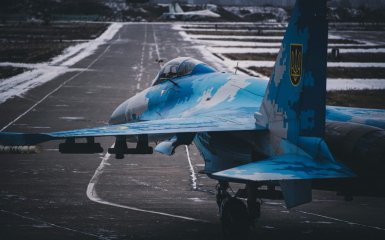Ukrainian pilots use tactics developed in the United States to defeat the air defence of the occupation army of the Russian Federation in the area of the front line.
What is known about the "Wild weasel" tactic
According to the journalists of the publication, the pilots of the Ukrainian military planes force the Russian occupiers to point their radars at them.
The planes then track the location of the radar source and strike with US AGM-88 high-velocity missiles (HARMs) before the Russian systems launch surface-to-air missiles, it said.
The article emphasizes that the US Army first tested this tactic during the Vietnam War.
The planes, which received the conditional name "Wild Weasels", were tasked with destroying enemy air defence radars.
It allowed the attack aircraft to start working.
The "Wild Weasels" planes had radar receivers, which were used to determine the location of enemy air defence systems.
At first, such planes were armed with bombs and later with high-speed missiles.
The term "wild weasel" comes from Project Wild Weasel. According to the National Museum of the United States Air Force, this US Air Force anti-aircraft defence strategy used direct attacks to suppress enemy air defences.
These missions, originally called "Project Ferret"—a reference to the small carnivorous mammal that enters its prey's lair to kill it—were renamed Project Wild Weasel to avoid confusion with the code name "Ferret," which used during the Second World War for countermeasures radar bombers.
Ukraine is clearly learning from Western military thought. "Ukraine pays great attention to SEAD missions," says Frederick Mertens, a strategic analyst at the Hague Center for Strategic Studies.
He added that Ukrainian tactics "go far beyond the classic missions of "Wild Weasel".
The difficulty of adapting HARM for Ukraine is due to the incompatibility of old Soviet-era jet aircraft, such as the MIG-29 and Su-27 fighters, with modern Western technologies.
Last month, US Undersecretary of Defence for Acquisition and Sustainment William LaPlante told reporters at a conference in Washington that Ukraine used iPads to make Ukrainian planes compatible with Western weapons.
What is known about the implementation of "Wild Weasel" operations by AFU
According to Justin Bronk, a senior researcher at the Department of Aviation and Technology at the Royal United Services Institute (RUSI) in London, after undergoing the necessary adaptation, Ukrainian aircraft fired hundreds of HARM missiles at the air defence radars of the Russian occupation army.
However, the Ukrainian military has changed the technique of performing these operations.
Although they initially achieved several successful hits on Russian air defense systems and radars, Russian air defense operators quickly adapted their tactics, the expert explains.
HARM launches now serve "a suppressive rather than a destructive purpose."
Once launched, "the missiles force Russian air defense system operators to turn off their radars and change locations to avoid being hit."
This leaves a short window in which other strike systems, such as HIMARS missiles or Storm Shadow missiles, can make their way to nearby targets with much less risk of being intercepted by Russian air defence systems, the analyst explains.
Although modified Soviet-era fighters allow the Ukrainians to use HARM missiles, the modifications do not allow them to make the most of their capabilities.
Therefore, delivering the F-16 will be crucial for strengthening Ukrainian air superiority.

